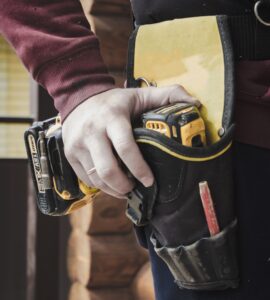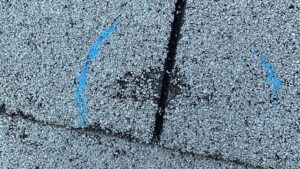Solar reflective roof shingles are an energy efficient alternative to conventional roofing materials. According to Energy.gov, reflective shingles can lower the internal temperature of a building by 50°F, which will save you money on your yearly energy costs.
Also known as cool roofs, their reflective nature protects your home from harmful solar energy and provides a more comfortable environment. There are several color options and multiple types of shingles to choose from, and the best part is, they typically cost about the same as regular shingles. The key is planning ahead before you install or upgrade your current roof.
How these roof shingles works
The heat from the sun is solar energy, which is a compilation of radiations. Infrared, visible and ultraviolet rays hit your home, and can be reflected back up into the atmosphere. Lighter colors can reflect the sun from the roof. White is common and can reflect as much as 90% of the solar energy. However, nearly 50% of the radiation is invisible and cannot be stopped by color choice alone.
Specialized pigments added to the roofing material can reflect as much as 60% of the invisible radiation. So, it’s important to talk to a professional about the best shingles for your home.
Solar Reflectance (SR) is the amount of solar radiation reflected by the roof, and Solar Reflectance Index (SRI) is the SR but takes into account the Thermal Emittance of heat from the home.
The three main aspects of determining a roof’s ability to protect your home from the sun are:
- Absorption – The amount of heat your roof absorbs and transfers into the home.
- Reflectance – How much radiation bounces off the roof and returns to the atmosphere.
- Emittance – The amount of heat within the home that is discharged by the roof.
Solar reflectance is allocated a numerical value of 0.0 to 1.0, where 1.0 is 100% reflection and 0% heat absorption. Emittance uses the same scale, and a 1.0 indicates that there is no heat transferring into the home.
Benefits of Reflective Roof Shingles
Reflective shingles not only help the homeowner, but they also help your neighborhood, your city and the planet. How is this possible? One aspect is the Heat Island Effect. Urban areas have a lot of homes, concrete and other buildings that consume solar energy. This energy is stored and increases the overall temperatures of the entire community. Larger cities with several urban areas see an increase in the entire city’s infrastructure because of this Effect.
Homeowner advantages include:
- Reduced energy costs due to less air conditioning demands
- Increasing your air conditioner’s lifespan
- Increased comfort levels within the home
- Decreased roof temperatures, which may increase the longevity of the roof and reduce maintenance costs
- Possible utility rebates depending on your area and what rebates are available
Reducing the Heat Island Effect does take more than one home, but there are several benefits to your community when you upgrade to a cool roof. Some of them include:
- Lowering the temperature in your neighborhood and surrounding areas
- Reduction of air pollutants, which travel farther the higher the outside temperature is
- Reduction of power outages by helping to decrease the amount of electricity demand, especially on very hot days, which in turn reduces emissions from power plants, which lower the overall temperatures of the community
Types of Reflective Roof Shingles
Most shingle types have a cool option, so you can still get the patterns and colors you want, with the added benefit of a cooler and more cost effective home. Look at these options when determining your shingles.
Asphalt
Asphalt shingles contain a fiberglass webbing that surrounds them. Select a light-colored shingle, or if a darker color is desired, apply granules to the surface of the shingles. These granules will absorb the heat and add to the overall reflective property of the roof. It isn’t recommended to add the granules to existing shingles. This may create moisture issues or void your current warranty, so look at installing new shingles to acquire the maximum effect.
Wood
If you happen to have wooden shingles then you’re in luck. In most cases, their coloring is already perfect for cooling your home as long as the roof has been maintained properly and there is no damage.
Metal
You would think that metal shingles or tiles would be perfect for heat reflection, and you’d be right, but they are terrible thermal emitters. You can get a reflective coating applied to them, but it’s not the best option. Metal shingles which have the paint baked into them are much more effective against the sun’s radiation.
Concrete
A contributor to the Heat Island Effect, these are in the same position as metal shingles. They can have paint or granules applied, but it’s best to replace them with shingles that have a factory injected pigment.
Polymer
Polymer shingles are an easy cooling option for your roof. Just ask the roofer to make sure there are cool-colored pigments added to the shingles before they are installed.
Contact Your Minnesota Roof-Cooling Expert Today
Midwest’s roof experts are knowledgeable in all types of roofing materials. Whether you’re looking for normal shingles of cooling shingles, we are here to help. We have decades experience, and have worked on hundreds of roofs throughout the area.
We ensure your roof will not be something you have to worry about after we leave your home. You can feel secure and sleep well knowing your family is safe and comfortable, because you contacted the best of the best in the industry.
We can help in all aspects of roofing design and application. Contact us if you have any questions about your insurance, what kind of roofing would work best for your home, and of course, we’re always happy to give you a fair estimate.





